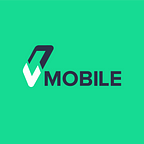When a Service Company Starts Developing Its Own Mobile Product: Lessons Learned
V-mobile is an experienced mobile development team with a successful 5-year service history behind it. Since 2016, the company has completed various projects in various fields. However, all the efforts went to the delivery of mobile applications that were outsourced to V-mobile.
In 2020, our team decided to branch out and try something completely out of our usual schedule, our very own product, developed from scratch by our team. With its challenges, motivating breakthroughs, “oopses” and “yays”, here we are to share the story of our first steps into this new realm.
In a world full of apps and software solutions for almost any problem you can think of, it’s hard to come up with something new and revolutionary. If you dig carefully enough, there is an app for almost any activity or any type of communication. Apps that offer fundamentally unique ideas are increasingly hard to come by, and most of them eventually end up lost somewhere at the bottom of the market.
Here are some of our initial findings regarding the processes you have to go through as you embark on a new product.
1. Research
For the successful launch of your product, you need to conduct full-scale research — research for market capabilities, competitors, similar trends, and possibly anything that can somehow touch the surface of your vision bubble. However, you have to be careful not to turn into an academic research program, where you spend months going the rabbit hole to find all details specific to your business idea. That said, good research will help you hone in on the strong points and winning factors of your concept that will enable you to concentrate on your target niche’s real needs and psychological characteristics.
Down the line, this will also play a key role in your marketing campaigns’ creative process, the purpose of which is to target and appeal to real people with real needs, and your mission is to lead them to your mobile app.
Both qualitative and quantitative types of research are useful for this stage. Besides internet resources, you might also need to meet with several of your potential users and interview them to glean their immediate feedback and reaction.
2. Identifying the niche
In the world of mobile apps, the targets are quite clear. If you work on a beauty and make-up app and promote it among the male wrestling team, the chances of succeeding are relatively low. So how do you define the right niche for your product?
In the beginning stages of our product ideation process, our team was engaged in endless discussions trying to define the right target market for our app. At first, we took the obvious road of going through some of the existing strategies and tutorials, but soon it became clear that our niche had to be identified through our own research and that the “Get 1 million users in 24 hours” YouTube videos won’t give you any valuable information.
Trying to appeal to the mass market contains a handful of risks, as you have to deal with an immense number of potential users. Well, if you succeed in your marketing campaign and get everyone on board, then you’re pretty darn lucky, and maybe your next stop should be Vegas. However, the chances of that are so slim that you’re better off starting with a niche.
As our app is mainly oriented towards creative people and their work’s appreciators, we decided to start off by focusing on them. It is way easier to work with a market with similar interests and psychology, as you can use various tricks and methods to grab their attention faster.
3. Resource allocation
Last but not least at this stage of the product development process is resource allocation. Before launching any project, you first need to understand the capacity and capabilities of your team. It is like taking a long hard look at yourself in a mirror. By correctly identifying the right resources at your disposal, you will be able to create a reasonable timeline for your plan of action.
Resource allocation was the first significant step in the roadmap of our app development. The number one thing, of course, is to try to remain within budget. It would be best if you were mindful of considering all assets that can somehow affect your work process. Start with the basic needs such as infrastructure, office, electricity, etc. Then move on to understanding the work scale to come and get the right specialists on board.
These are the first steps within a long series of actions in the saga that is product development. In this blog, we’ll share more useful tips and start uncovering our app’s main features. Currently, we are getting ready to enter the market and have finalized the majority of points on our pre-launch roadmap. Entering with a polling/survey app into the world of designers, creative agencies, and visual concepts might seem challenging. However, our team is determined to develop a game-changing mobile app that will satisfy the needs of millions engaged in this industry. Stay tuned for more news and updates, as we’ve prepared some pretty neat surprises for you.
Think big, aim for new galaxies, stay tuned with V-Mobile!
